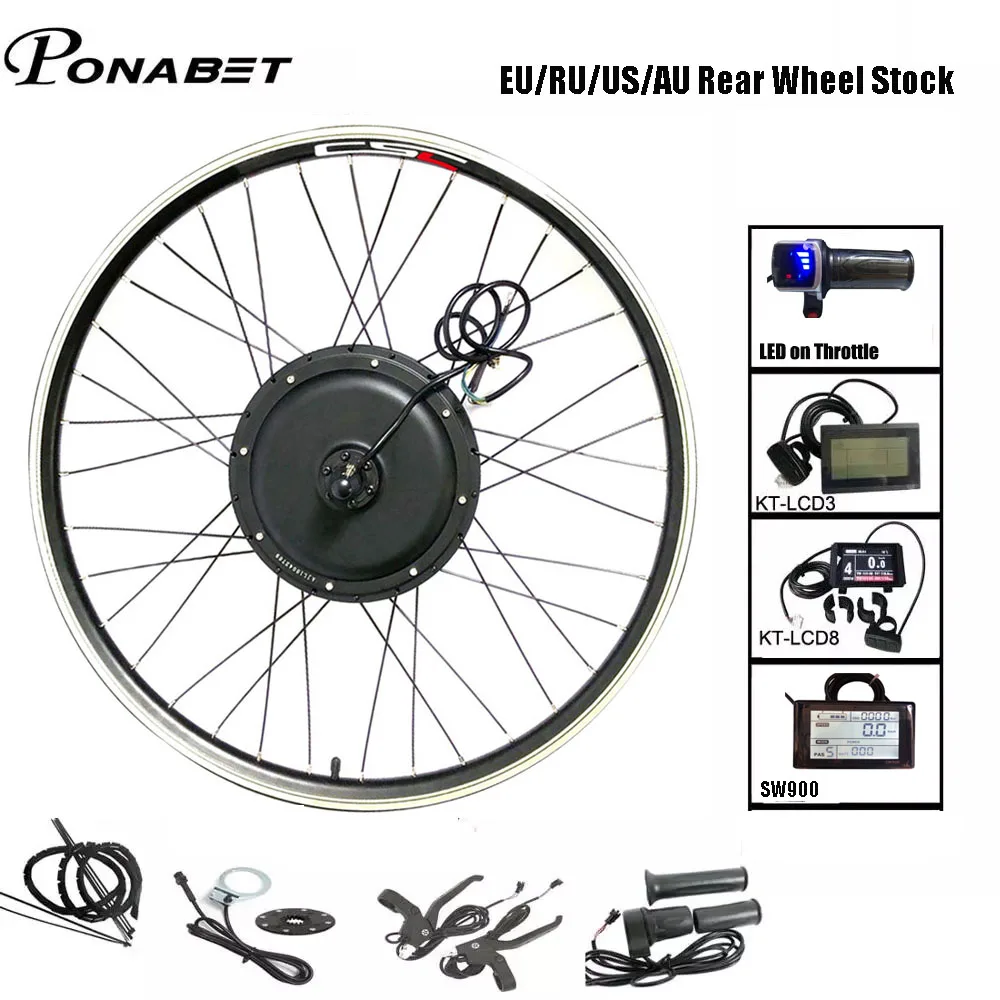Hello. I`m trying to build ebike but staying on legal limits, but need some advice and recommendations.
Hub motor I pick is Voilmart 36V 250W I want to pair it with 48V Battery. in that case which KT or other controller be best to use(best affordable display with it?)? I read here keeping amps to 15 is the safest way? Also about the battery what would you recommend 17AH or it can handle 20Ah? I`m not sure about that but I read that 250W hub motors cant handle 13S batteries and limit is 12S is that right? Just to mention I'm not for high speed. What I'm looking for is range. Many thanks!
You have to understand how motor speed works. The maximum speed is proportional to the voltage.
Motors don't care about voltage. 100v would be OK for the motor. It's heat and current that damage motors.
Torque is directly proportional to current, so high current can damage the gears. High current also causes a lot of heat.
Heat comes from the inefficiency of the motor. The motor is most efficient at about 75% of the max rpm (affected by battery voltage). Once the rpm goes below 50% of maximum, the efficiency accelerates downwards and the heat accelerates upwards. That's under the condition of full power. When you apply less than full power, it has the same effect as reducing the voltage. Basically, your goal is to avoid using full power at less than 50% of maximum rpm.
Lets look at your Voilamart 36v 250w motor: They don't give any info about the motor's max speed, except that they say that you'll be pedalling at 16mph without sweat, so I'd assume that it's a normal 260 rpm motor and 16mph is 210 rpm in a 26" wheel, which is close to the 75% where the motor makes it's best power and efficiency, so a good choice if you want to ride around at 16mph with a 36v battery. When you run it at 48v, it becomes a 338 rpm motor (x13/10) and it's best power and efficiency comes at 20.8 mph. If you want to stick to the legal 15.5mph, that's not going to be good for range because 15.5 mph is in the range where efficiency is lower.
To travel at the legal limit at 48v, you need a 260 rpm 48v motor; however, a 201 rpm 36v one run at 48v would give you the 260 rpm. In fact a 201 rpm 36v motor and a 48v 260 rpm one would be identical in all respects. They would be the same motor apart from the label.
You can buy 201 rpm motor wheels, but you don't normally find them in kits. You can get them from BMSBattery and Greenbike kit plus some other Chinese resellers.
If you wanted ultimate range and efficiency, you should get a 201 rpm 48v motor, which will give good power up to about 13 mph and enough power to maintain a comfortable 15 mph cruising speed, but you have to also consider the state of charge of the battery. You get the 48v at about 60% fully charged, where those figures for speed apply. At 100% charged you get about 54v and when empty, you get around 40v, so those speeds will reduce by 20% when your battery is flat. That's no problem if you use the motor mainly for hills, but it's not going to work as a fast long range commuter.
Battery size has no effect on the motor, except that it will take longer for the voltage to go down, so you get more power compared with a lower capacity battery over the same distance, but you get the penalty of weight. A light bike is always better than a heavy one. Each 1kg you add increases the power needed to get you up/along any incline by approx 1%, no matter how steep or not steep.
A final point about why to use 48v. You get 30% more power for the same current and the power you get from 36v at 15 amps is not enough for steep hills unless you're light and/or fit. The extra 30% makes all the difference. You can always turn the power down when you don't want it, but you can't turn it up if you don't have it.
In summary, the best motor/battery voltage is the setup that gets the motor running at 75% of it's maximum speed (considering how that's affected by battery voltage) when riding at your modal speed.





